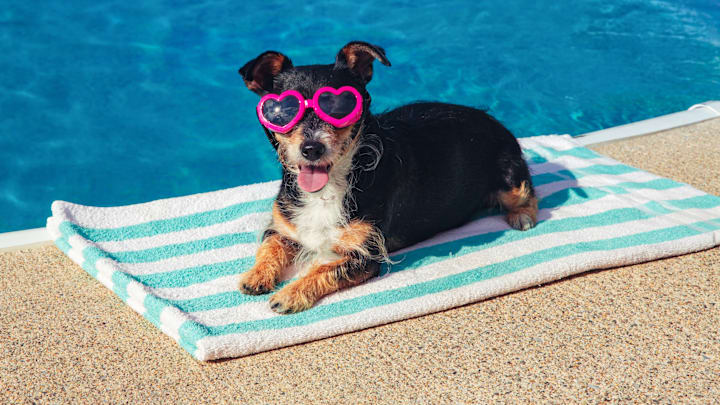Unlike the human members of your household, your pets can’t ask you to blast the air conditioning on hot days. This can become a problem as temperatures rise. Thanks to their fur coats and a lack of sweat glands all over their bodies to cool them down, dogs can quickly get too hot in the sun. During the dog days of summer, every pet owner should learn the signs of overheating and the best ways to prevent it.
According to AARP, overheating occurs when an animal generates more body heat than they can regulate. If it persists, it can lead to such life-threatening conditions as heatstroke, brain damage, and kidney failure. Numerous factors contribute to your pet’s risk of overheating. A young, healthy dog might be fine going for a walk on an 80°F day in dry heat, while an older, less-active canine may feel uncomfortable outside on a 70°F day with high humidity. In general, weather that feels too hot for you is unsafe for your pet.
Panting is one way animals like dogs and cats regulate their body temperature. The rapid breathing encourages moisture to evaporate off their tongues, which cools them down the same way evaporating sweat cools humans. Some panting is normal, but heavy, prolonged panting could mean your pet is dangerously hot. Excessive drooling, lethargy, and bright red or blueish gums are also signs a dog has been in the heat for too long (for cats, dark red or gray gums is a sign of overheating).
If you notice your animal is overheating or suffering from heatstroke, take them to the vet right away. You can cool them down in the meantime by getting them into a shady spot, ideally in front of a fan or air conditioner, and giving them water to drink if they’re able to. Using a hose, spray bottle, or damp towel to wet their body with cool (not cold) water can also lower their temperature.
Even if your pet isn’t overheated, keeping them well-hydrated and in the shade on hot days can prevent an emergency trip to the vet (this will also help protect them from sunburn). It’s also wise to keep walks short during the summer and make sure the spot where your pet sleeps indoors is well-ventilated. If you take your pet with you on car trips, never leave them in the vehicle alone—even for short periods.
Heatstroke isn’t the only threat your pet faces this time of year. Hot pavement during the summer can damage their paws. Here’s an easy tip for checking if it's too hot to walk your dog.
Read More About Pets:
A version of this story originally ran in 2022; it has been updated for 2024.
